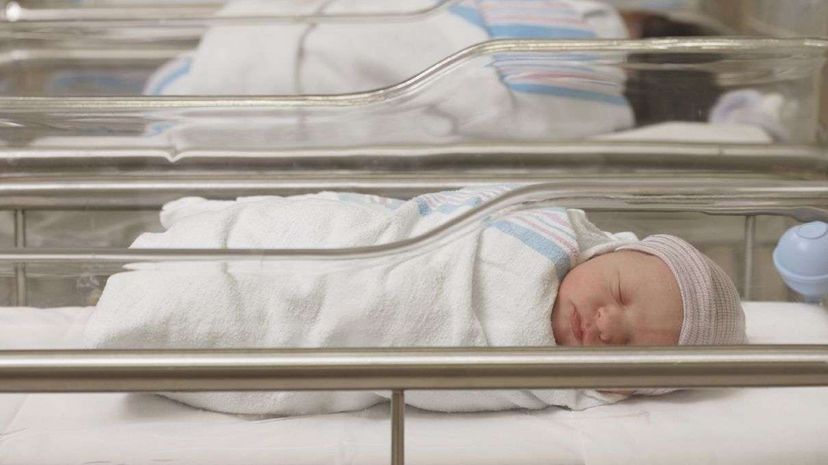 “Biological sex differences can start in the womb and affect health outcomes, even in newborns. Blend Images – ERproductions Ltd./Getty Images
“Biological sex differences can start in the womb and affect health outcomes, even in newborns. Blend Images – ERproductions Ltd./Getty Images
Oxygen deprivation can irreparably damage the human brain. In the fetus or newborn, that damage is called neonatal hypoxic-ischemic encephalopathy, or HIE, and it’s one of the most common causes of infant death and mental disability.
It also has a gender preference: Among infants with HIE, males are more likely to suffer significant brain damage as a result of the condition. This discrepancy has long perplexed the medical community, but new research out of the University of Wisconsin at Madison may shed some light on the cause.
Neonatal HIE is usually triggered by perinatal asphyxia, an interruption in oxygen supply immediately before, during or immediately after the child-birthing process. If oxygen deprivation lasts longer than about four minutes, brain tissue starts to die. Depending on the severity of the damage, HIE can lead to cognitive and motor disabilities, cerebral palsy, epilepsy, developmental delays and other long-term impairments in infants who survive.
According to the World Health Organization, up to 60 percent of infants with HIE die soon after birth, and another 25 percent have severe disability. The UW study, published in the journal eNeuro in February 2015, explores a possible mechanism behind females’ apparent advantage in avoiding these poor outcomes.
Estrogen Receptors May Boost Cell Survival
Influenced by a previous study, the UW researchers investigated sex receptor expression, in particular estrogen-receptor alpha (ERa). This protein is activated by estrogen, the primary female sex hormone. They studied its expression in the hippocampus regions of male and female neonatal mice. HIE most commonly affects the hippocampus, which plays a role in memory and learning.
They were looking for a relationship between ERa and TrkB receptors.
"We believe that activation of the TrkB receptor promotes cell survival mechanisms following HIE," says lead researcher Pelin Cengiz, pediatrics professor and investigator with the Waisman Intellectual & Developmental Disabilities Research Center at UW. Cengiz explains over email the team hypothesized "that the degree of activation is increased in the presence of increased ERa."
Here’s how the experiment went: The male and female mice started out with similar levels of ERa in their brains. Next, the researchers removed all ERa from the brains of half the mice and left the others intact. They then induced HIE, and half the mice in each group received a drug that activates TrkB. Three days later, they analyzed the brains.
What they found strongly supported a link between ERa and TrkB. In the mice that had no ERa, the drug didn’t work at all.
In the mice with intact ERa, they found that after onset of HIE, levels of the protein rose in the female brains but not in the male brains.
And in the mice with intact ERa that received the drug, TrkB expression increased in the female brains to a greater extent than in the male brains, and only the female brains exhibited a reduction in c-caspase-3, an enzyme that triggers cell death.
More Unanswered Questions
The results point to a role for ERa in females’ better outcomes following HIE, although the precise nature of that role is unclear. Cengiz says the protein doesn’t appear to confer protection in the absence of the TrkB-activating drug, which is not currently used to treat neonatal HIE.
"The only therapy currently available to clinicians treating HIE in human newborns is hypothermia. However, the therapy is of limited usefulness because not every newborn is eligible for hypothermia therapy," she writes.
Further research may clarify where ERa fits into HIE’s gender bias, and Cengiz’s team is already working on it.
Ultimately, Cengiz wants to develop treatments that protect all newborns from the potentially devastating effects of HIE.
"The goal," she writes, "is to identify the mechanisms that help females so that we can try to manipulate those mechanisms in males to improve their outcome."
Now That’s Worth Studying
In 2010, the U.S. infant mortality ratewas21 percent higher for males than for females.


